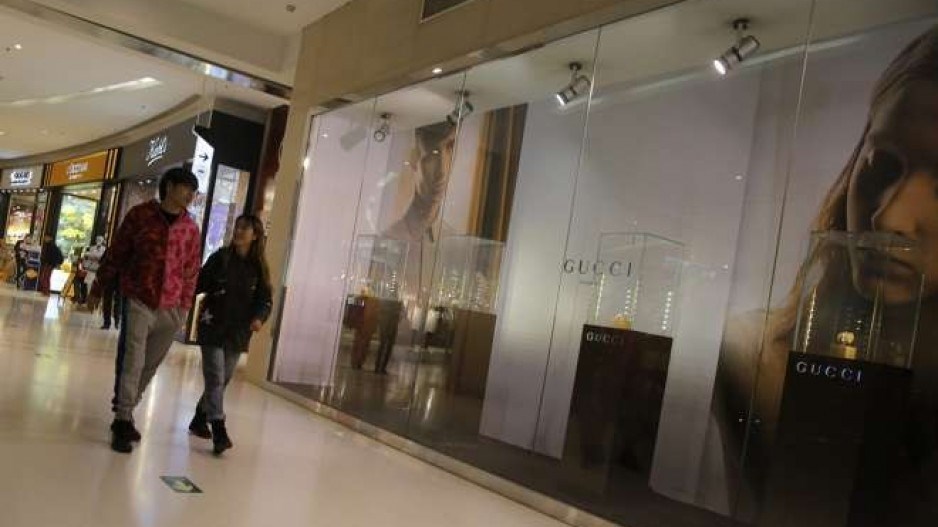The weakening yuan appears to be working against global luxury brands as Chinese tourists scale back their overseas spending, but it has at least a silver lining -- a rekindling of luxury spending at home.
Experts fear a long-term downward trajectory in the Chinese currency will make overseas shopping too expensive for Chinese tourists. Luxury goods purchases account for 40 per cent of outlays by mainland Chinese when travelling abroad.
China’s central bank set the yuan reference rate lower on Monday, reflecting the 12th straight trading day of lowered settings for the currency mid-point. The yuan is on track to weaken past the psychologically important level of 7 per dollar, even as commentaries in the People’s Daily and Xinhua News Agency maintained that there was no basis for sustained depreciation as the yuan would stabilise.
That is adding to the gloom among luxury conglomerates such as Gucci owner Kering SA and Prada SpA, who have already grappled with a double whammy of China’s slowing economy and Beijing’s graft clampdown.
Shrinking purchases abroad resulted in the first year-on-year decline in total Chinese luxury spending for 2016, according to a report released in October by global consultancy Bain & Company, while domestic sales caught the markets by surprise with 4 per cent annual growth. The uptick in domestic retail sales follows three years of stagnation.
“Europe is losing touristic support except for Britain…and the US market is continuing to struggle due to the strong dollar,” Bain & Company said, referring to 1 per cent growth in the luxury goods market in Europe and an estimated 2 per cent drop in the US for 2016.
The world’s biggest group of luxury buyers used to splash out tens of millions of dollars on luxury brand clothing and accessories in Paris and London, taking advantage of the wide price gap between imported goods on offer in the mainland.
Chinese shoppers tend to react quickly to dramatic currency volatilities, said Jacques Penhirin, partner and head of Greater China with London-based consulting firm Oliver Wyman.
Spending in the UK has picked up as mainland shoppers sought out bargains in the wake of the 11 per cent slide in the pound in June. Meanwhile, outlays by mainlanders on watches jewellery and other luxury items in Japan have been on the decline this year in light of a prolonged yen appreciation.
But efforts by western luxury brands such as Chanel to harmonise global pricing on some product lines has meant that travelling abroad doesn’t necessarily add up to savings when factoring in travel and other expenses.
“A softening yuan is curbing the overseas travel sentiment and Chinese holidaymakers may not be as keen as before on jetting off to places far away like Europe,”said Mariana Kou, head of Hong Kong consumer research with CLSA. “If the depreciation continues, there might emerge a point where it is cheaper to buy goods in mainland than in overseas.”
Exchange rate fluctuation have fuelled speculation that luxury brands are likely to lift their prices across the board in China, but experts say there’s no sign that these adjustments are coming in the near term.
“So far I’ve not seen luxury brands shift their pricing in the wake of the weaker yuan,” Kou added.
Even if a handful of top labels such as Gucci and Louis Vuitton push up their prices at home, this may be an attempt to bolster their unique appeal and retain the prime brand image, said Tang Xiaotang, founder of luxury retail consultancy Nofashion in Guangzhou.
Higher costs for overseas travel have seen many shoppers returning to the brick-and-mortar outlets, which bodes well for luxury brand sales in mainland China.
But a recovery in mainland China sales this year is not likely to offset the drop in luxury spending by mainlanders overseas, according to a forecast by Bain.
“Selected currency devaluations [were] supporting local domestic consumption,”said the Bain study, adding that Beijing’s recent measures to crack down on luxury goods smuggling also stimulated buying at home.
But Penhirin believes the impact of yuan depreciation would be limited, especially to dominant European luxury houses such as Kering and LVMH Moët Hennessy Louis Vuitton SE that had much smaller exposure to the US dollar than the euro.
“It is worth noting that the euro has also weakened against the dollar this year, so the gap [between the yuan and the euro] is not that wide.”
Meanwhile, the pace of yuan depreciation has been relatively gradual compared to the pound following Brexit.
“When there is only 1 per cent drop in the Chinese yuan, traders will realise it but consumers may not, so they would not rush to the scene and snap up bargains in Britain as many had done during the post-Brexit era.”




